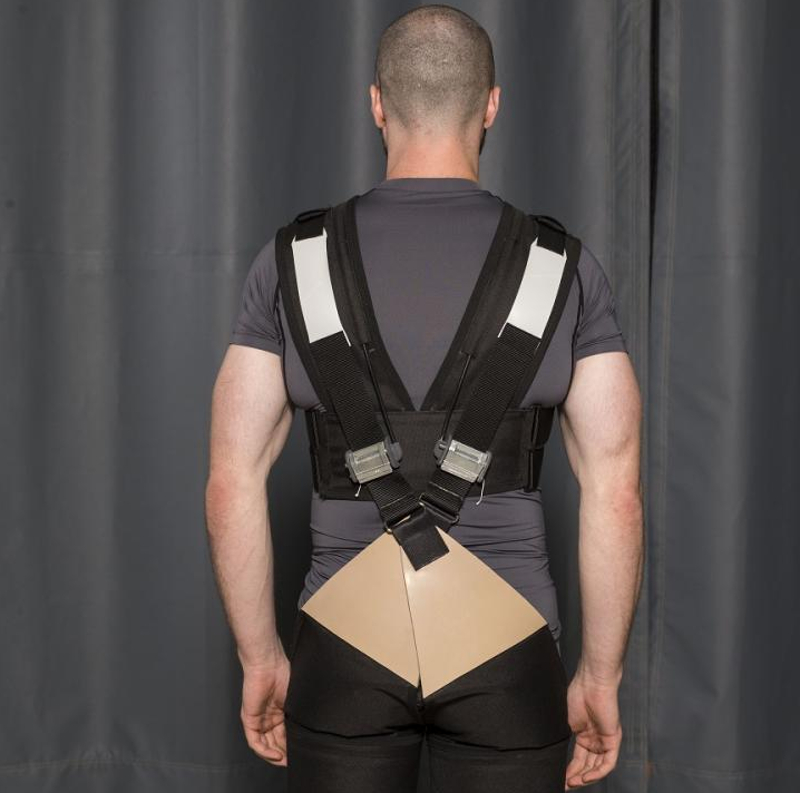When activated, the patent-pending mechanised undergarment can reduce muscle activity in the lower back by up to 45 per cent. The device itself consists of two fabric sections made of nylon canvas, Lycra, polyester and other materials for the chest and legs. These sections are connected by straps across the middle back, with natural rubber pieces at the lower back and glutes.
The device is designed so that users engage it only when they need it. A double tap to the shirt engages the straps and when a task such as lifting is done another double tap releases the straps. This lets the user sit down, and the device feels and behaves like normal clothing. The device also can be controlled by an app, with users tapping their phones to engage the smart clothing via Bluetooth.
Eight subjects tested the device leaning forward and lifting 25-pound and 55-pound weights while holding their position at 30, 60 and 90 degrees. Using motion capture, force plates and electromyography, it was demonstrated that the device reduced activity in the lower back extensor muscles by an average of 15 to 45 per cent for each task.
“The next idea is: Can we use sensors embedded in the clothing to monitor stress on the low back, and if it gets too high, can we automatically engage this smart clothing?” said Karl Zelik, assistant professor of mechanical engineering and the principal investigator on the project.

Dr Aaron Yang, who specialises in nonsurgical treatment of the back and neck at Vanderbilt University Medical Center in Nashville, Tennessee, is a co-investigator.
“People are often trying to capitalise on a huge societal problem with devices that are unproven or unviable,” he said. “This smart clothing concept is different. I see a lot of health care workers or other professionals with jobs that require standing or leaning for long periods. Smart clothing may help offload some of those forces and reduce muscle fatigue.”
The device was unveiled in July, 2017 at the Congress of the International Society of Biomechanics in Brisbane, Australia, where it garnered a Young Investigator Award for Erik Lamers, a mechanical engineering Ph.D. student who helped develop the design.
According to the UK’s national Institute for Health and Care Excellence, treating all types of back pain costs the NHS over £1bn per year. In the USA, the condition is estimated to cost $30bn in medical expenses and over $100bn in lost productivity per year.
https://www.theengineer.co.uk/focussed-ultrasound-takes-aim-at-chronic-lower-back-pain/





Swiss geoengineering start-up targets methane removal
Several rather dubious statistics in this report. IF methane had 120× the thermal effect of CO2 that would be TWO orders of magnitude. Two is not...